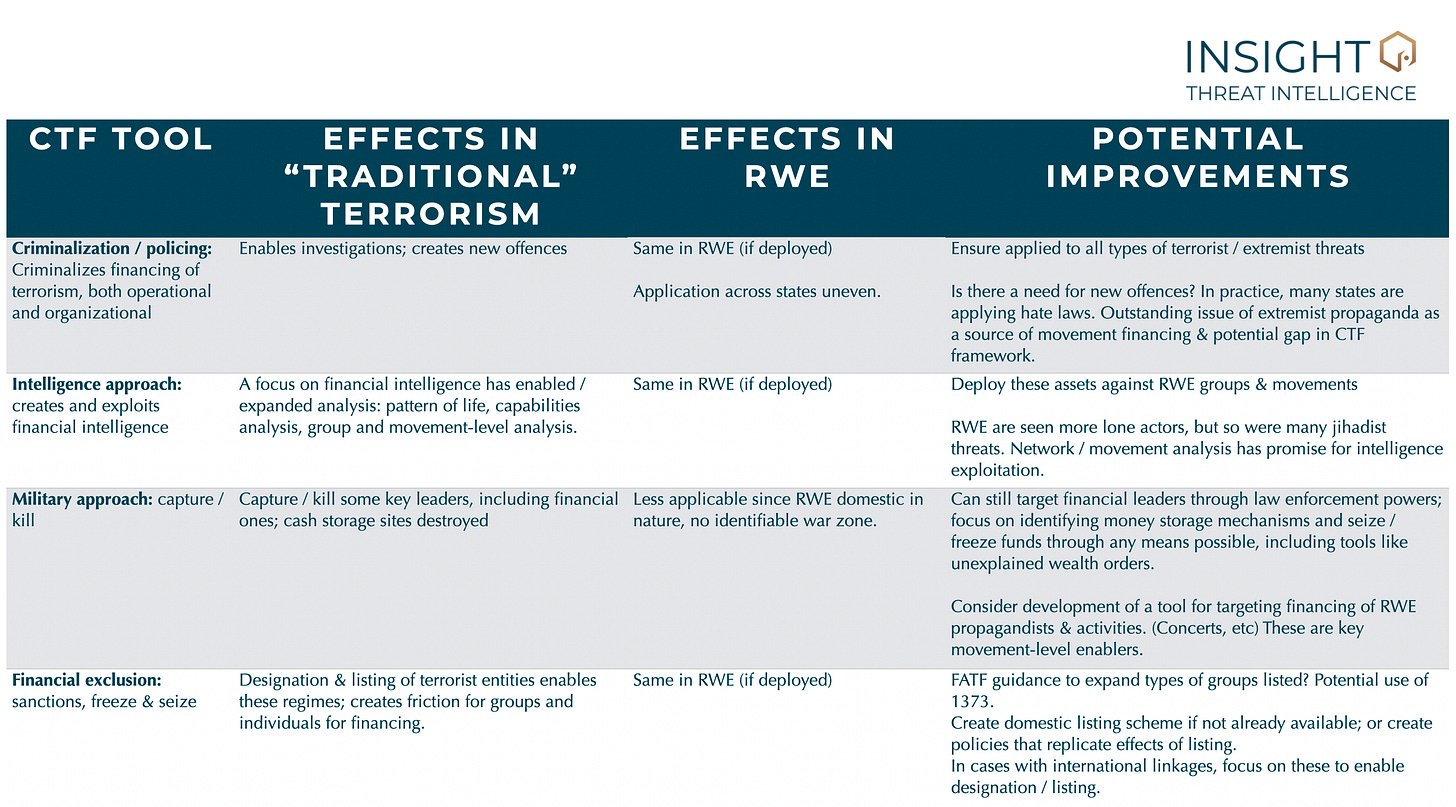Hello from Doha! This week I’m attending the Global Security Forum hosted by the Soufan Centre. It’s increadible here - amazing location, top notch hospitality, and world-class thinkers. It’s an honour to be invited! I’ve been asked to speak about efforts to counter violent far-right movements . Here are a few thoughts on the topic, particularly relating to the financing of the violent far-right.
There are many lessons to be learned from the global war on terror that can be applied to how we approach the violent far right. We have a particular set of tools and practices that were developed and refined over the last twenty years. Unfortunately, there is limited evidence of the effectiveness and outcomes of many of these approaches, something that should be rectified through more empirical studies of counter-terrorism. But for now, there are a few things we can say (or hypothesize) about what, if any, of our counter-terrorist financing tools are appropriate for this renewed threat.
For in-depth analysis of some of the movements, groups, and attacks from the violent far right, check out these articles:
(There’s lots more in the Insight Intelligence archives!)
In the analysis below, I look at 8 different counter-terrorism financing approaches that can be applied to the violent far right. In particular, financial deplatforming is a relatively new approach: there has been little application of this approach in “traditional” terrorism, as until recently, most groups / movements / individuals did not profit from propaganda creation (or at least not at the same scale as the violent far right does).
It’s also worth considering the role of states in the violent far right. To date, most of the activity has been to create a permissive environment for these groups, but some states have actively encouraged the dissemination of far-right propaganda and misinformation. In other cases, states have provided access to financial services for proscribed individuals in an effort to circumvent de-banking brought about by proscription / listings. Finally, some states might be playing a more active role in directing violent far-right attacks.
In short, most of the tools we have at our disposal to counter the financing of terrorism can be applied to the violent far right, with some caveats / adaptation. The main challenges in doing so relate to international cooperation: many states see this issue as a “western” problem. In fact, the transnational nature of these networks and movements require a coordinated international response and a cross-walk of tools. In some cases, a truly coordinated approach might be hindered by domestic restrictions and freedom of expression laws; however, by working together to apply most of these approaches (or to achieve similar outcomes) in concert with allies, the threat these movements, groups, and inspired individuals pose can be reduced.
Waiting until a group or movement poses a threat in a particular country to adopt legislation, consider definitional challenges, or anticipate risk, is not a good approach. This is at least a lesson we can be certain of from twenty years of the global war on terrorism.





